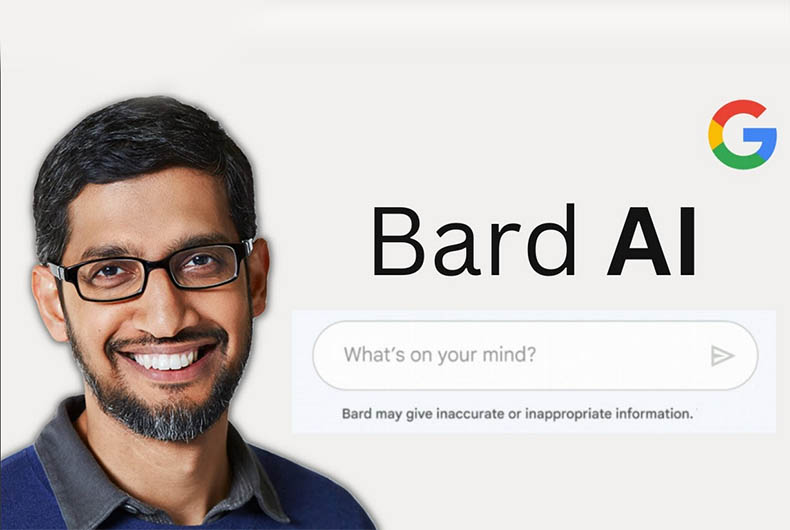Google has been at the forefront of innovation for years, and its latest launch is no exception. Google Bard is a revolutionary new text-to-speech technology that can take any text and turn it into an audio file, allowing users to listen to any content they want in a wide variety of languages. This incredible technology has captured the attention of developers, marketers, and everyday consumers alike. In this blog post, we’ll take a closer look at what Google Bard is, how it works, and how you can use it to supercharge your own projects. Read on to learn more!

What is the Google Bard?
Shakespearean sonnets may be found and read using the new Google Bard search engine. Visitors have two options: either they may browse through all of Shakespeare’s works or search for a single sonnet by title or number. A contemporary English translation and a link to the original text will both be included in the search results. Each sonnet is also available on Google Bard’s audio platform, read by a trained actor.
How does it work?
Short animated videos may be created and shared online using Google Bard. The videos are made by fusing various audio, text, and graphic elements. There are few choices for making films on Google Bard because it is still in its early phases. The Google team is attempting to increase the tool’s functionality, though.
You must first choose a theme before using Google Bard to produce a video. Right now, there are six different options: love, nature, travel, sport, food, and animals. You may begin filling up your film with content once you’ve decided on a subject. Images from the internet or your PC can be added. Also, you may include text in your movie by creating a message or by selecting from the pre-written texts that are included with each theme.
You may preview your video once you’ve included all the stuff you wish to see in it. After you’re satisfied with the outcome, you may send your movie to friends via email or social media.
Difference between Bard and Bert
The two new Google products, Bard and Bert, differ greatly from one another. For starters, Bert is geared at individual customers, whereas Bard is intended for usage by businesses. The price reflects this distinction; Bard is $10 per month whereas Bert is free.
Bard is better endowed with features than Bert. Bert only supports one account, but Bard enables users to establish and manage numerous accounts. Bert lacks a set of tools for organising tasks and projects, but Bard does.
The last difference between Bard and Bert is that Bard connects with Google Calendar, Gmail, and Drive. Businesses can easily keep track of their activities and deadlines thanks to this connectivity.
What are its features?
You may make and share short, interesting movies with your friends and followers using Bard, a Google tool. Your films may be customised and made to stand out by adding text, graphics, and music. Bard also provides a selection of filters and editing tools to assist you in producing the ideal video for your requirements.
(Also read: Google Bard, rival of ChatGPT)
Pros and Cons of the Google Bard
Launched in 2009, Google’s effort at a social networking platform was called The Bard. It was supposed to provide a venue where individuals may openly and creatively express their beliefs. The Bard finally shut down in 2014, but it never truly took off. These are some advantages and disadvantages of Google Bard:
PROS:
- Unlike other social media platforms like Facebook or Twitter, The Bard was designed to be a more accessible and innovative medium.
- It featured several distinctive features, such as the capacity to instantly include multimedia content into your posts.
- The platform has the ability to link people from all around the world with shared interests.
Cons:
- The site never really took off, had a limited user base, and as a result, people found it less fascinating because there wasn’t as much information being shared.
- The site was subsequently shut down by Google owing to a lack of usage.
How to Use the Google Bard
Using the Bard is simple if you have a Google account.
- Visit https://bard.google.com and log in using your Google account.
- A screen that resembles a blank text editor will appear. There will be a drop-down menu with the label “Text source” in the upper left corner. When you click it, choose “Open from Drive.”
- A new window will pop up, requesting your selection of the Google Drive file you want to open in Bard. Click “Open” once you’ve made your choice.
- Bard should now be open with the specified document selected. Just click the first paragraph to begin reading. It will immediately begin reading the passage out loud using text-to-speech technology.
- Either click on the right arrow icon at the bottom of the page or use the spacebar on your keyboard to go on to the next paragraph.
- The end! Every Google Drive document may now listen to hands-free with Bard.
Will Google Bard replace ChatGPT?
The open-source chatbot platform Google Bard enables developers to build chatbots that can converse with consumers in natural English. Based on the free TensorFlow framework, Google Bard was created with scalability in mind. The platform has several characteristics that set it apart, such as the capacity to manage lengthy discussions, comprehend user context, and recall prior encounters. (Also read: ChatGPT vs Google: The Ultimate Comparison, Which one is Better?)
Conclusion
The introduction of Google Bard has undoubtedly been exciting, as it promises to offer a more efficient means of obtaining online information. It could be the next significant advance in search engine technology because of its emphasis on natural language processing. We are excited to see what other features Google Bard introduces in the future and how this ground-breaking kind of information search will alter the way we use the internet.



